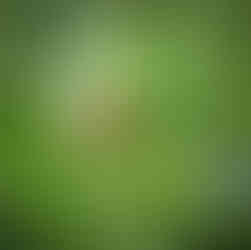Creating a Certified Wildlife Habitat in Your Backyard
- Hannah O'Connor

- Mar 1, 2024
- 3 min read
Updated: Aug 8, 2025
This information is based on the National Wildlife Federation's Certified Wildlife Certification. You can download the Requirements Checklist to confirm you have all the elements necessary to be certified.
What Is a Certified Wildlife Habitat?
The Role of the National Wildlife Federation
The Certified Wildlife Habitat™ program is an initiative of the National Wildlife Federation (NWF) that empowers homeowners, schools, businesses, and entire communities to create landscapes that support local ecosystems. Since its launch in 1973, the program has certified over 250,000 habitats nationwide, including more than 11,000 in Texas alone. To qualify as a Certified Wildlife Habitat™, your yard must provide the following five components: food, water, cover, places to raise young, and sustainable practices. Each element plays a crucial role in supporting the lifecycle of local wildlife.
Why Certify Your Yard?
Here are a few benefits:
Support Local Wildlife: Native bees, butterflies, birds, and amphibians rely on specific plants and conditions to survive. Your yard can help provide those missing links.
Build Biodiversity: Even small habitat patches contribute to larger ecological networks, especially in cities and suburbs.
Promote Sustainable Gardening: Certified habitats use fewer chemicals, less water, and more natural materials, creating a healthier environment for both people and animals.
Community Recognition: A certification sign not only celebrates your efforts but also educates neighbors and encourages others to follow suit.
FOOD
Does your habitat provide at least three (3) food sources for wildlife?
Native plants provide food eaten by a variety of wildlife. Feeders can supplement natural food sources.
Examples:
Native plants that offer seeds, berries, nuts, or nectar.
Healthy insect population.
Supplemental bird feeders.
Seeds
Black-Eyed Susan (Rudbeckia hirta): Produces seeds favored by birds.
Purple Coneflower (Echinacea purpurea): Attracts birds with its seeds and is also a nectar source.
Inland Sea Oats (Chasmanthium latifolium): The seeds of this grass are popular with many birds.
Berries
American Beautyberry (Callicarpa americana): Produces clusters of purple berries, a favorite among birds.
Yaupon Holly (Ilex vomitoria): Offers bright red berries, a bird food source.
Agarita (Mahonia trifoliolata): Produces red berries that are popular among wildlife.
Texas Persimmon (Diospyros texana): Produces black, sweet fruit that is a favorite of birds and mammals.
Wax Myrtle (Morella cerifera): The small, bluish-gray berries are a valuable food source for birds, especially in winter.
Nuts
Texas Pecan (Carya illinoinensis): State tree of Texas; provides nuts for wildlife.
Bur Oak (Quercus macrocarpa): Its acorns are a significant food source for many animals.
Mexican Plum (Prunus mexicana): Produces plum fruits that wildlife can eat.
Nectar
Turk's Cap (Malvaviscus arboreus): Red flowers provide nectar for hummingbirds and butterflies.
Texas Sage (Salvia coccinea): A favorite of hummingbirds and butterflies.
Texas Lantana (Lantana urticoides): Known for its colorful flowers that provide nectar for butterflies and other pollinators.
WATER
Does your habitat provide at least one (1) water source for wildlife?
All animals need water to survive; some need it for bathing or breeding.
For small spaces, consider adding bird baths and container water gardens to create a welcoming environment.
Consider adding a rain garden, pond, or backyard marsh for larger properties.
Examples:
Birdbath.
Water Garden.
Water dish.
Natural stream or pond.
COVER
Does your habitat provide at least two (2) sources of cover for wildlife?
Wildlife need places to shelter from bad weather and hide from predators or hunt for prey.
Examples:
Dense vegetation
Brush
Bat House
Roosting box
Wooded Area
Bramble Patch
Ground Cover
Rock Pile or Wall
Cave
Dense Shrubs or Thicket
Evergreens
Log Pile
Burrow
Meadow or Prairie
Water Garden or Pond
PLACES TO RAISE YOUNG
Does your habitat provide at least two (2) places where wildlife can raise their young?
Wildlife need resources to reproduce, protect, and nourish their young.
Examples:
Mature Trees
Meadow or Prairie
Nesting Box
Wetland
Cave
Host Plants for Caterpillars
Dead Trees or Snags
Dense Shrubs or a Thicket
Water Garden or Pond
Burrow
SUSTAINABILITY
Do you employ at least two (2) practices from the sustainable gardening categories?:
Maintain your yard or garden naturally to ensure that the soil, air, and water remain healthy and clean.
SOIL AND WATER CONSERVATION
Examples: Limit water use, compost, mulch, reduce lawn and pavement, use a soaker hose, or install a rain garden.
CONTROLLING INVASIVE EXOTIC SPECIES
Examples: Use native plants, remove invasive exotic plants, and keep cats indoors.
ORGANIC PRACTICES
Examples: Eliminate chemical pesticides and fertilizers, and attract beneficial insects.
Do you meet all of the requirements?
Begin the certification process today!
Source: © National Wildlife Federation












































If I already have all criteria required how does one get the certification?